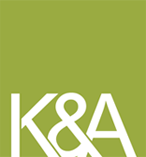1. Introduction
On January 1, 2018, long-awaited Act No. 225/2017 Coll., amending Act No. 183/2006 Coll., on Urban Planning and the Building Code (hereinafter “BA“) and 43 other related acts, entered into force. This amendment had been under preparation for a long time and was a major point of interest.
The amendment had several objectives, the main one being to support construction in the Czech Republic. The means to achieving this goal was to simplify and accelerate the permit procedure. Some of the major changes are briefly described in this article. However, a complete overview of these changes exceeds the scope of this article.
2. Joint proceedings or one decision, one appeal
The amendment of the BA introduces a joint procedure, which combines planning and building permit proceedings. The result of this joint procedure is the issue of a single joint permit for the (i) location and (ii) realisation of construction.
Naturally, only one remedy (appeal) is permitted against a decision in joint proceedings, followed by an administrative complaint.
Investor’s choice. The use of joint proceedings is optional and each investor can choose whether to go the way of traditional separate or joint planning and building permit proceedings. In some cases, the old procedure may be more advantageous for the investor. This will be particularly true in more complex projects that involve considerable costs for the preparation of project documentation and the number of authorities involved, whereby a potential failure in joint proceedings would be a substantial setback.
Groups of buildings. A joint procedure can be conducted for both a single building and a group of buildings. However, the buildings must be mutually related. If various building authorities are assigned to individual buildings, the joint procedure will be conducted by the building authority responsible for the main building. Building authorities responsible for secondary buildings will be in the position of authorities concerned.
Duration. In most cases the joint procedure should take a maximum of 60 days. It is only possible to extend the deadline for the decision to 90 days in complex cases.
Validity. The joint permit is valid for two years from the date it comes into force. A longer period, up to a maximum of 5 years, may be set on request.
3. No building approval and construction limits
No limitations. A major advantage for smaller projects (family homes and buildings for family recreation) is the ability to realise construction without limitations on the building footprint (formerly limited to 150 m2) simply based on new requirements for building notification.
The investor can use the family home immediately after its completion and building approval will no longer be required. The investor is only required to carry out specified tests and measurements according to special legislation.
Building approval. The obligation to obtain building approval remains for buildings whose use was subject to building approval under current legislation. These are the buildings where there is an increased need to protect the public interest (e.g. hospital buildings, motorways, schools, infrastructure, etc.). Approval proceedings are also required for these construction projects, if the application has deficiencies or the conditions for issuing building approval are not met.
4. Simplification of EIA
The amendment also enables the process of environmental impact assessment (EIA) to be integrated in one of the following ways:
- Planning proceedings combined with environmental impact assessment, where EIA is integrated into planning proceedings
- Joint planning and building permit proceedings combined with EIA
As part of this integration, the building authority will communicate with both the investor and authority responsible for the EIA process (i.e. with the Regional Authority or Ministry of the Environment). Thus, a binding opinion on environmental impact will be issued in the context of planning/joint proceedings and no further separate procedure will be necessary.
As in the case of joint proceedings, the use of this institute is the choice of the investor. Here, too, the investor can choose to conduct separate EIA proceedings, as has been the case to date.
5. Other changes
Other changes simplifying the construction process include:
- the introduction of a simplified procedure for making changes to urban planning documentation (i.e. updating the principles of urban development at regional level, changes in the municipal urban plan or a change in the regulatory plan for the municipality) in cases where there is no need to process alternative solutions;
- shortening the deadline for the submission of proposals for the cancellation of urban planning documentation to one year from the date it entered into force;
- the ability to prepare urban studies at the request and expense of the investor;
- the obligation to post urban planning documents on the internet (i.e. on the websites of individual municipalities and regions), and on the urban planning portal.
6. Restriction on the participation of common-interest associations
The amendment also restricts the ability of common-interest associations to become participants in planning or building permit proceedings. These associations can only be participants in the case of construction projects subject to EIA (e.g. airports, motorways, incinerators or landfills for hazardous waste).
The association must also exist for at least 3 years at the time of entering proceedings.
7. Conclusion
The aim of this article was not to provide an exhaustive overview of all the changes brought by the amendment of the Building Act, but to point out some of the most significant changes. Only the future will tell whether these changes lead to the declared goal of supporting construction in the Czech Republic by accelerating and simplifying planning and building permit proceedings and the EIA process.
Overall, however, the amendment can be regarded as beneficial as it does not force investors into new types of integrated proceedings but leaves them with the choice of whether they prefer the old or new way. However, due to the complexity and specifics of these procedures, representation by a qualified professional is recommended.
For more information, please contact our office’s partner, Mgr. Jiří Kučera, e-mail:jkucera@kuceralegal.cz ; tel.: +420604242241.
